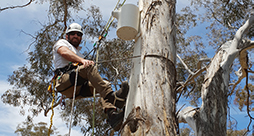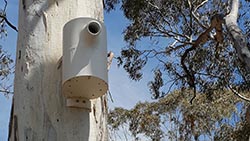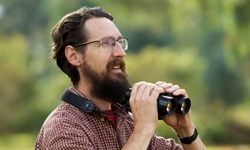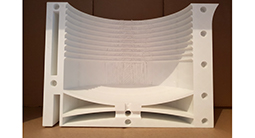* The world is getting warmer, and heat waves have serious impacts on wildlife.
* Climate adaptation is critical for populations to avoid extinction, and there’s a range of practical things we can do to help animals adjust to changing climates.
* Natural tree hollows vital for many native animals including gliders and parrots.
* CSU team is building high tech 3D-printed nesting boxes that perform better under extreme climates than current wooden boxes.
With heat waves becoming the new normal in Australia, spare a though for native animals, struggling to find places to live.
Many animals rely on hollow branches as cool, safe places to raise a family, but as big trees are getting rarer, Australian wildlife are running out of options.
An innovative team from a Charles Sturt University (CSU) is using modern technology to give Australian wildlife a helping hand.
 “Natural hollows in trees are critical for animals worldwide – they use them for nesting, resting and food,” said CSU Honours student Mick Callan.
“Natural hollows in trees are critical for animals worldwide – they use them for nesting, resting and food,” said CSU Honours student Mick Callan.
“However, land clearing has caused widespread habitat loss as large trees and tree hollows have disappeared.
“In Australia, tree hollows provide important habitat for over 15 per cent of vertebrate fauna as well as various insects and other invertebrates.
“Hollows take at least 80 years to form, so populations of many animals now increasingly rely on nest boxes and other artificial structures placed in trees by well-meaning people.
 “However, the effectiveness of wooden nest boxes - as even a short-term solution to replace tree hollows - is being questioned. This is due to short lifespan, high variation in microclimate, limited understanding of animal requirements, poor design, and need for ongoing maintenance of these boxes,” Mr Callan said.
“However, the effectiveness of wooden nest boxes - as even a short-term solution to replace tree hollows - is being questioned. This is due to short lifespan, high variation in microclimate, limited understanding of animal requirements, poor design, and need for ongoing maintenance of these boxes,” Mr Callan said.
The CSU team, a collaboration between the Institute for Land, Water and Society (ILWS) and CSU Engineering, will use detailed knowledge of target native species such as red-rumped parrots and striated pardalotes – a tiny native bird - to develop, field test and manufacture different 3D-printed plastic tree hollows for use in Australian conditions.
 Professor David Watson, team leader and a leading ecologist, anticipates that the new plastic hollows will have thermal properties, longevity and internal dimensions comparable to natural tree hollows, and provide more suitable homes for native animals.
Professor David Watson, team leader and a leading ecologist, anticipates that the new plastic hollows will have thermal properties, longevity and internal dimensions comparable to natural tree hollows, and provide more suitable homes for native animals.
“As climate conditions become hotter and drier in southern Australia, many places where animals used to live are becoming uninhabitable,” Professor Watson said.
“This project responds to the challenge of climate change, developing innovative ways to make homes for wildlife that can handle climatic extremes, from summer heatwaves to winter cold snaps.
 “By mimicking naturally occurring structures and using new technology to make structures that can be integrated into buildings, streetlights and other parts of the built environment, we are helping Australian wildlife adapt to changing climates.”
“By mimicking naturally occurring structures and using new technology to make structures that can be integrated into buildings, streetlights and other parts of the built environment, we are helping Australian wildlife adapt to changing climates.”
The one-year project has received nearly $10,000 from CSU Green.





Social
Explore the world of social